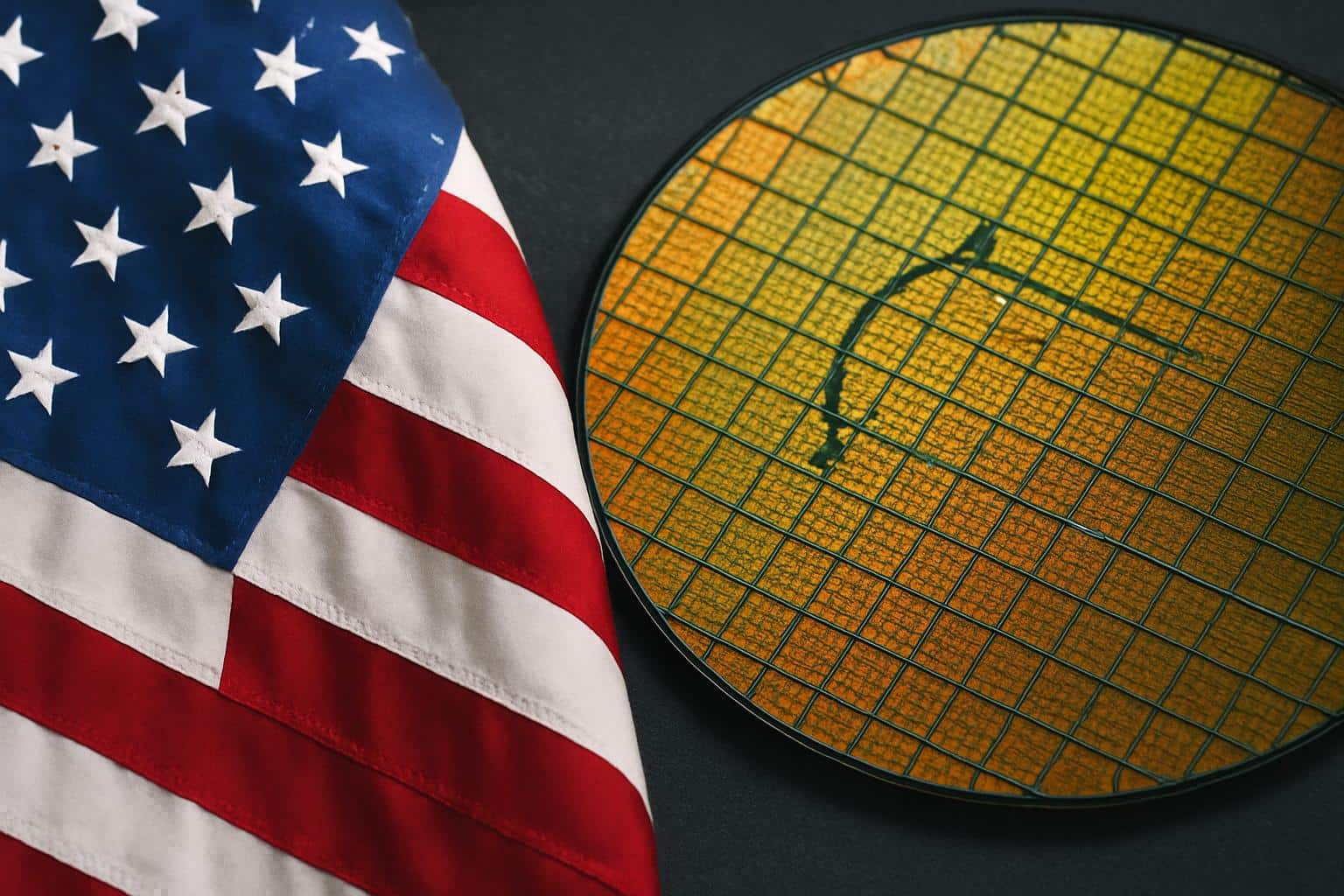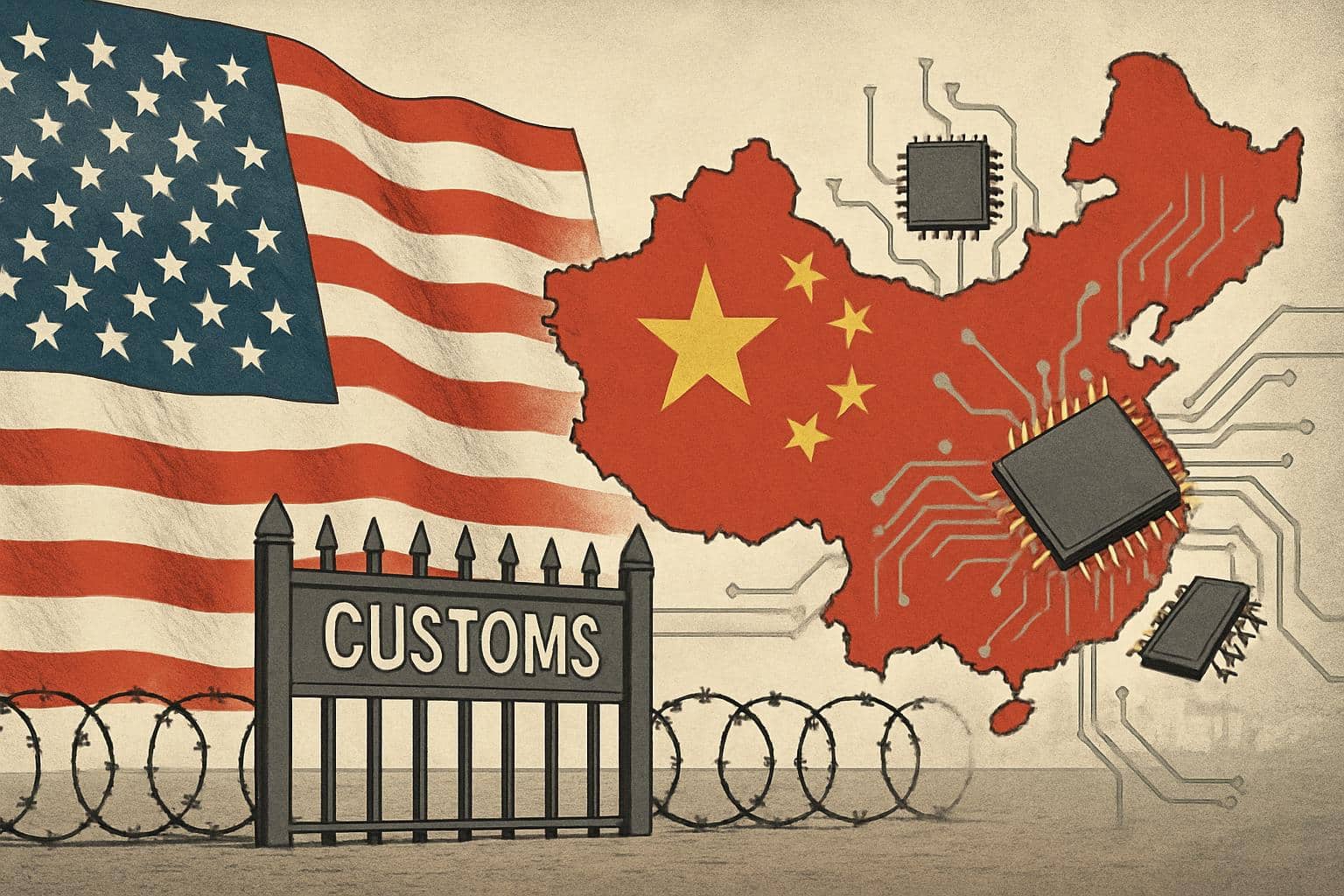The Trump administration is exploring an aggressive trade tool that would effectively threaten to drive up the cost of a majority of both imported and domestically produced goods as part of a high-stakes strategy to establish greater U.S. economic independence from China, the Wall Street Journal reports. The idea under consideration links tariff exposure to a 1:1 domestic-production-to-imports benchmark — an unusually blunt effort to rewire supply chains by using imports rather than subsidies as the pressure point.
The action highlights a sharpening U.S. stance on chip self-sufficiency.
- What a Ratio Rule Would Do in Practice for Semiconductors
- A Reality Check on Semiconductor Capacity and Timing
- Price Shocks and Supply Chain Whiplash for Electronics
- Legal, Diplomatic and Enforcement Risks for a Tariff Plan
- Who Wins and Who Pays Under a Semiconductor Tariff Plan
- What to Watch Next as a Semiconductor Ratio Rule Emerges

It would build on new export controls that have been tightened in recent years and try to hasten a manufacturing buildout that has yet to materialize despite substantial federal incentives under the CHIPS and Science Act.
What a Ratio Rule Would Do in Practice for Semiconductors
Underpinning a ratio regime, meanwhile, would be market access contingent upon manufacturing behavior: as more chips sold into the U.S. become imports, companies failing to match that imported volume with U.S.-made output should find themselves subject to tariffs. The design details matter. Will compliance be gauged on a unit, wafer start, dollar or technology class basis? A unit-based metric leads to gamesmanship (e.g., manufacturing many bottom-end “volume” chips to balance out fewer high-value advanced nodes). A value-based approach is less prone to manipulation but more demanding for auditing.
Another key question is scope. If the rule applies only to advanced nodes, it focuses pressure on exactly what the U.S. lacks today. If it gets legacy nodes in, maybe more mature-node production nudges stateside, boosting autos and industrials, but the AI and data center crunch remains.
A Reality Check on Semiconductor Capacity and Timing
Even today, the U.S. still retains about 10–12% of the world’s semiconductor manufacturing capacity, down from its peak of about 37% back in 1990, per the Semiconductor Industry Association. Almost none of the world’s high-volume leading-edge capacity (5nm and below) exists in the U.S.; it is focused in Taiwan’s TSMC and South Korea’s Samsung.
It typically takes three to five years and $10–$20 billion per site to bring up new fabs, not to mention that costs of operations in the U.S. are materially more expensive as well. Total U.S. manufacturing costs can be roughly 30% higher than in East Asia without continued incentives, according to a widely cited SIA and Boston Consulting Group analysis. Despite billions in Commerce Department awards that have been made for multiple projects, timelines have slid out on flagship sites, and the installation of tools is being regulated by a tenuous supply chain.
Simply put, a timing mechanism based on quick compliance with a ratio rule could bump up against physical reality. Most companies can’t just flip a switch to add overseas wafer capacity, especially for advanced logic, packaging and some specialty processes.
Price Shocks and Supply Chain Whiplash for Electronics
Exposure to tariffs linked to imported content would filter through electronics bills of materials. Fabless designers and device manufacturers would probably offload costs onto downstream purchasers — autos, data centers, defense contractors, consumer electronics companies — hiking end-user prices. Through the 2020–2022 shortage, back-of-the-envelope estimates from consultancies put lost sales in the auto industry at significantly more than $200 billion globally as chips throttled production; ill-judged patterns of trade measures could threaten fragility anew.

The policy could secondly provide perverse incentives to those without the disease. Firms could rebalance their product mixes toward the easy-to-make nodes just to comply with the ratio, leaving complex markets starved of supply. Alternatively, they could reroute supply chains via third countries in order to reduce apparent import exposure, making for more difficult enforcement and rules-of-origin checks.
Legal, Diplomatic and Enforcement Risks for a Tariff Plan
Not only would a ratio-triggered tariff that was linked to the behavior of domestic firms be new, it also probably would be challenged. Look for challenges in the areas of statutory authority and compliance with World Trade Organization obligations. Those from whom the U.S. imports most chips, including Taiwan, South Korea, Japan, Malaysia and Singapore, could see such steps as discriminatory and undermine the multilateral posture Washington has been trying to build around export controls and supply-chain security.
Enforcement would be nontrivial. Regulators would require visibility into murky foundry contracts, multilevel distributors and complicated bills of materials on product teardowns. The Commerce Department and Customs and Border Protection would need to coordinate classification, valuation and compliance audits at a level of detail that industry has long resisted.
Who Wins and Who Pays Under a Semiconductor Tariff Plan
Possible winners include specialty and legacy U.S. node fabs that can add capacity most quickly as well as semiconductor equipment makers and materials suppliers positioned for a domestic buildout. Advanced packaging providers may also benefit if regulations incentivize onshore back-end processing.
On the flip side, fabless chip designers and AI-focused companies that depend on leading-edge wafers from Taiwan and South Korea would experience the most painful adaptation. Cloud companies constructing AI infrastructure might face pricier and less available supply in the future if imports get tariff-hit before U.S. advanced capacity comes online.
What to Watch Next as a Semiconductor Ratio Rule Emerges
Three key details will determine the market impact:
- The metric (units vs. value and whether technology nodes are differentiated)
- The timeline (grace periods and ramp schedules)
- Carve-outs (for defense-critical parts, medical devices or sectors without domestically viable alternatives)
Industry groups like the Semiconductor Industry Association and the U.S. Chamber of Commerce are probably going to argue for phased implementation and broad exemptions.
If the administration moves forward, it will need to pair any ratio mechanism with sustained, predictable incentives and expedited permitting. Without that, tariffs could turn into a tax on American competitiveness rather than a bridge to long-lasting U.S. manufacturing capacity.

